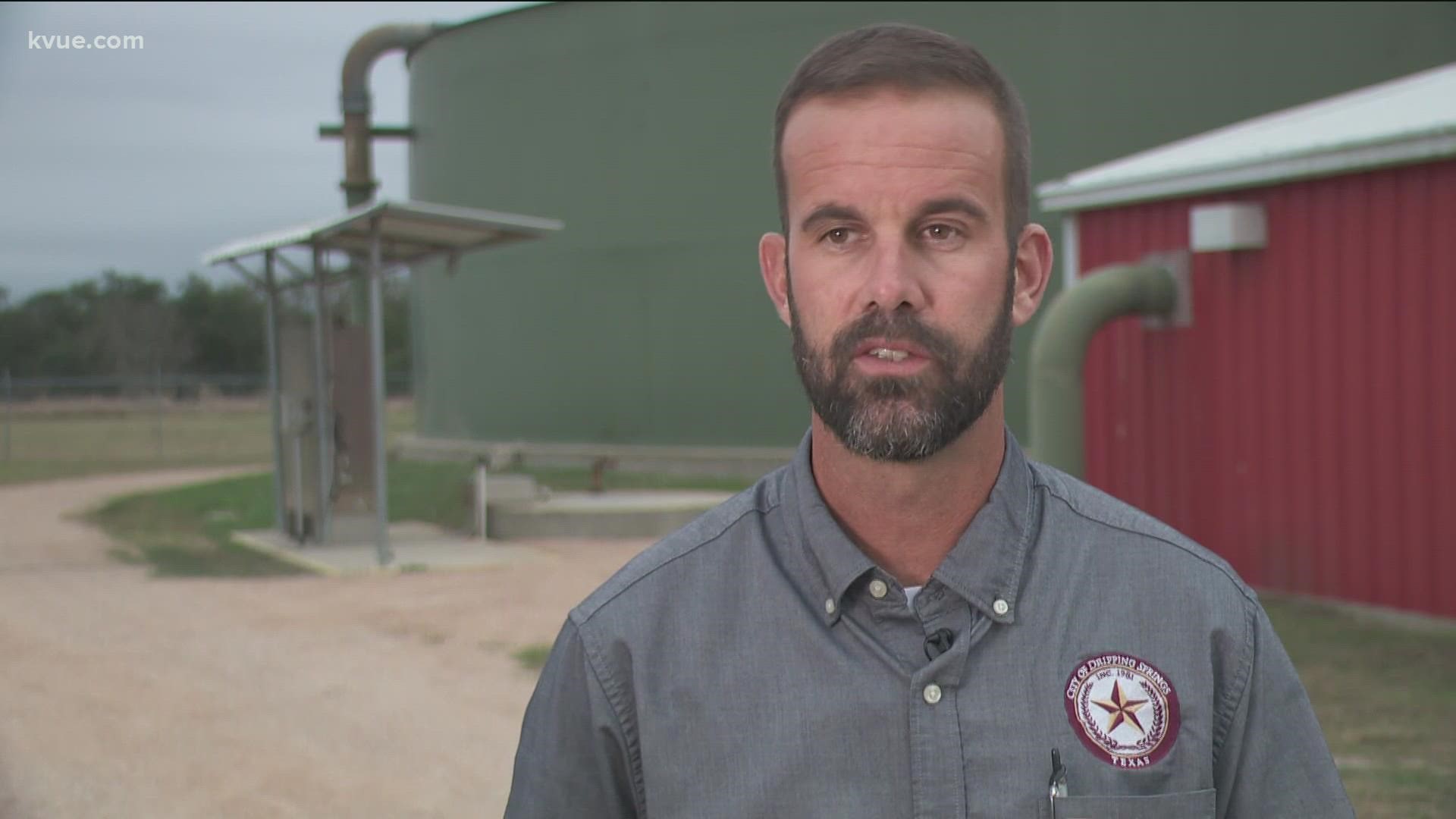DRIPPING SPRINGS, Texas — Since Dripping Springs put its development moratorium in place, the wastewater treatment plant employees can temporarily let out a slight sigh of relief.
Public Works Director Aaron Reed explained how the plant works.
"Raw wastewater comes into the plant, goes through treatment, chlorinated, goes through our filters, and this is what comes out on the other side," said Reed.
It's where the water ends up after leaving the wastewater treatment plant that's causing a problem for the City of Dripping Springs and its ETJ.
"We have the capacity in our plant that you see here in our collection system that brings the raw wastewater to the plant," said Reed. "It's a capacity issue in the fields where we dispose of the treated effluent."
Reed said the City doesn't have more permitted areas to dispose the cleaned or treated effluent water. It hit capacity because of the city's rapid growth.
"There's a limited amount of gallons per day that can go on every acre of permitted fields," said Reed.
Reed said the City's current permit is a land application permit, meaning the City has specific permitted fields to dispose of the effluent water.
He said a discharge permit would be more beneficial, which the City has applied to get.
"A discharge permit … allows us to either discharge into a waterway or use that water as a beneficial reuse," said Reed, "so golf courses, common areas, different places that we can irrigate with that water."
Reed said the City got the discharge permit back in 2019, but it's being contested in court.
A temporary fix is to try to slow the unexpected growth. In November, the City put a development moratorium in place and extended it until Feb. 20, so it's not accepting a lot of building permits.
"The moratorium did not change demand in Dripping Springs. That only changed supply," said developer Kyle Fernandez.
"It's just pushing demand further outside of the city, which benefits me greatly because the majority of what I build is outside of the ETJ," Fernandez said.
It also means more people could start relying on septic tanks, which the City is trying to avoid.
"If there's a malfunction, if there's an issue with it, there's not somebody there to make sure things are going right," said Reed. "The discharge permit that we did obtain from TCQ that's currently in pending litigation has one of the strictest permit limits in the state of Texas. So the City wants to be environmentally conscious. The City wants to treat our wastewater to the highest level possible."
Reed said another mitigation plan in place is to require some subdivisions to apply for their own land application permits.
As far as their discharge permit, Reed said litigation could go on for another half a year.
"We're currently waiting for oral argument in January, and then we're guessing about six months after that we'll have a ruling on whether or not we can proceed with that permit," said Reed.
The City does have the option to extend the moratorium for 90 or 120 days.
With the City still needing time to pick a firm to help upgrade its development plan for the city's growth, along with the pending litigation, city leaders said the odds of an extension are not low.
PEOPLE ARE ALSO READING:

